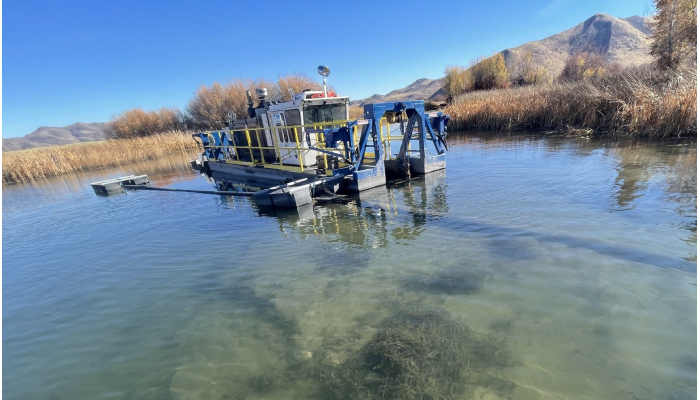
What Does A Canal Dredge Actually Do?
Canals are more than just picturesque waterways; they play a vital role in transportation, commerce, and recreation. But what keeps these essential channels navigable? Enter the canal dredge—a powerhouse of sediment removal that ensures our canals remain functional and safe for boating traffic. This behind-the-scenes hero often goes unnoticed, yet its work is crucial to maintaining the health of aquatic ecosystems and supporting local economies.
In this article, we’ll dive deep into the fascinating world of canal dredging. From its rich history to modern techniques and equipment used today, discover how this process transforms our waterways for generations to come. Join us as we explore everything from environmental impacts to successful case studies that showcase the importance of efficient dredging practices!
History Of Canal Dredging
The history of canal dredge stretches back thousands of years. Ancient civilizations recognized the importance of waterways for trade and transportation. The Egyptians, for instance, crafted canals to facilitate movement between the Nile and the Red Sea.
During the Middle Ages, Europe saw a surge in canal construction. Dredging became essential as silt accumulation threatened navigability. As commerce expanded, so did efforts to maintain these vital routes.
By the 18th century, advancements in technology began transforming dredging practices. Steam-powered machinery replaced manual labor, allowing for larger-scale operations. This evolution marked a turning point in how societies approached waterway maintenance.
In America, major projects like the Erie Canal showcased innovative dredging techniques that significantly boosted economic growth. Today’s modern methods owe much to these historical milestones that laid foundational principles still used across various regions worldwide.

The Purpose And Benefits Of Dredging Canals
Canal dredging serves multiple essential purposes that enhance waterway functionality. Primarily, it maintains navigability. Over time, sediment and debris can obstruct channels, making them impassable for boats and other vessels.
Another significant benefit is flood control. Dredging helps to deepen canals and create more capacity for stormwater runoff. This can reduce the risk of flooding in surrounding areas during heavy rains.
Ecologically, dredged canals can support healthier aquatic habitats by removing pollutants and promoting better water circulation. This encourages biodiversity and supports local wildlife.
Additionally, well-maintained canals often boost local economies by facilitating trade routes or enhancing recreational activities like fishing or boating. Communities near these waterways typically enjoy increased tourism as a result of improved access and aesthetics.
Canal dredging plays an important role in sustaining infrastructure integrity by preventing erosion along banks caused by stagnant water buildup.
Types Of Equipment Used In Canal Dredging
Canal dredging relies on a variety of specialized equipment designed for efficiency and effectiveness. One of the most commonly used machines is the suction dredger. This powerful device removes sediment by sucking it up through a long pipe, transporting it to designated disposal sites.
Another essential tool is the mechanical dredger, equipped with buckets or claws that scoop out material from the canal bed. It’s particularly useful in shallow waters where precision is necessary.
Hydraulic excavators also play a crucial role in this process. They can maneuver around tight corners and are great for removing larger debris or vegetation obstructing navigation.
In some projects, articulated dump trucks transport dredged materials away from the site. Their robust design allows them to handle heavy loads over rough terrain efficiently.
Each piece of equipment has its unique functions tailored to specific challenges encountered during canal maintenance and restoration efforts.
Process Of Dredging A Canal
The process of dredging a canal involves several key steps. It begins with surveying the area to assess sediment levels and determine the best approach for removal.
Next, crews mobilize equipment such as excavators, draglines, or specialized dredges. Each piece plays a crucial role in efficiently extracting material from the waterway.
Once on-site, operators engage in removing silt, sand, and debris that may obstruct navigation or harm aquatic life. The material is often transported to designated disposal sites or used beneficially in land reclamation projects.
Throughout this phase, it’s essential to monitor environmental conditions closely. This ensures compliance with regulations aimed at minimizing ecological disruption during operations.
Thorough inspections follow each dredging project to evaluate its effectiveness and make any necessary adjustments for future endeavors. This meticulous attention keeps canals functional and environmentally balanced.
Environmental Impacts And Regulations
Canal dredging carries both ecological benefits and challenges. The removal of sediment can improve water flow, reduce flooding risks, and enhance navigation. However, it can also disrupt local ecosystems.
When sediments are disturbed, they may release contaminants. These pollutants threaten aquatic life and water quality. Therefore, careful planning is essential.
Regulations play a vital role in mitigating environmental impacts. Agencies often require environmental assessments before any dredging activity begins. These assessments help identify potential harm to sensitive habitats.
Best practices include using silt curtains to contain debris during the process and monitoring water quality closely afterward. Adhering to guidelines ensures that canal dredges minimize disruption while achieving their goals effectively.
Collaboration between contractors and regulatory bodies fosters sustainable outcomes for both waterways and wildlife populations. Balancing human needs with environmental stewardship creates healthier ecosystems long term.
Case Studies: Successful Examples Of Canal Dredging Projects
One notable example of successful canal dredging is the revitalization of the Housatonic River in Connecticut. This project aimed to remove contaminated sediment, improve water quality, and restore aquatic habitats. The initiative not only enhanced navigation but also boosted local tourism and recreation.
Another impressive case is found in the Port of Rotterdam. Dredging efforts here have been crucial for accommodating larger vessels as global shipping demands grow. Innovative techniques were employed to ensure minimal disruption while expanding depths.
In Florida, the Kissimmee River restoration project showcased how dredging can revive ecosystems by reconnecting floodplains and improving hydroperiods. This endeavor helped revitalize wildlife habitats alongside enhancing flood control measures.
These projects illustrate that effective canal dredge strategies can yield substantial environmental benefits while supporting economic growth within communities.
Cost And Funding Considerations For Canal Dredging
Canal dredging involves significant financial planning. The costs can vary widely based on the project’s scale, location, and specific requirements.
Initial assessments often include feasibility studies to gauge environmental impact and engineering challenges. These studies help stakeholders understand potential expenses early in the process.
Funding sources are diverse. Public agencies may allocate budget funds for maintenance or improvements. Grants from environmental organizations also play a critical role in supporting dredging initiatives aimed at ecological preservation.
Private partnerships can provide additional resources, especially for projects that enhance commercial navigation routes.
Bidding processes are vital as they ensure competitive pricing among contractors. This step helps maximize efficiency and minimize costs while maintaining quality standards.
Project management is crucial to keep expenditures within budgetary limits while adhering to regulatory guidelines throughout the dredging process.
Future Developments In The Field Of Canal Dredging
The future of canal dredging is set to embrace cutting-edge technology. Innovations such as automated dredging systems are on the horizon, promising increased efficiency and precision.
Remote-controlled machinery will allow operators to monitor operations from a distance. This reduces risks associated with difficult working conditions.
Sustainability is also becoming a focal point in dredging practices. Eco-friendly materials and methods are being developed to minimize environmental impact during canal maintenance.
Data analytics will play a crucial role too. By utilizing advanced software, companies can predict sediment buildup and optimize dredging schedules accordingly.
Furthermore, collaboration between governmental bodies and private firms is expected to grow. This partnership could enhance funding opportunities for ambitious projects aimed at restoring waterways worldwide.
These advancements may redefine how we approach canal maintenance, making it both smarter and more sustainable for generations to come.
Conclusion
Canal dredging is more than just a maintenance task. It plays a vital role in ensuring waterways remain navigable and environmentally sustainable. With a rich history dating back centuries, canal dredges have evolved into sophisticated machines that provide significant benefits to communities.
The purpose of canal dredging extends beyond improving navigation; it also enhances water quality, supports local ecosystems, and helps prevent flooding. Various types of equipment are employed to perform this crucial work, each designed for specific tasks ranging from sediment removal to habitat restoration.
The process itself involves careful planning and execution to minimize environmental impacts. Regulations guide these activities, ensuring compliance with ecological standards while maximizing the positive outcomes of dredging projects.
Successful case studies demonstrate how effective these initiatives can be when done correctly—boosting local economies and enhancing community access to water resources. However, budget considerations always come into play as funding for such endeavors can be complex yet necessary.
As technology advances, so too does the field of canal dredging—introducing new methods that promise efficiency while addressing environmental concerns head-on.
With ongoing developments on the horizon, the future looks bright for canals worldwide. The importance of maintaining our waterways cannot be overstated; they serve as lifelines for many regions globally. Understanding what a canal dredge does is essential not only for those directly involved in waterfront management but also for anyone who values our natural resources and infrastructure.

